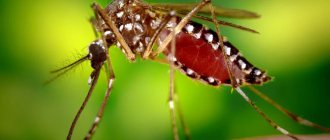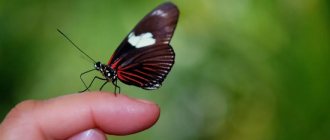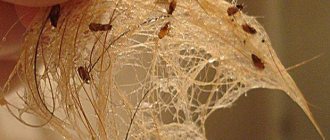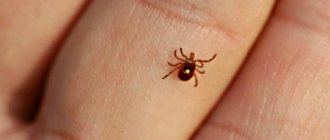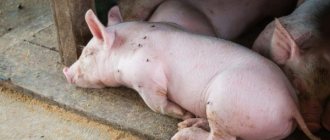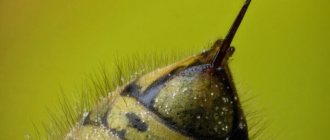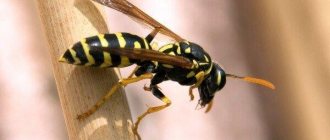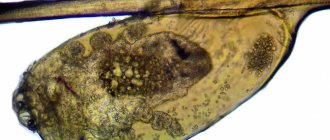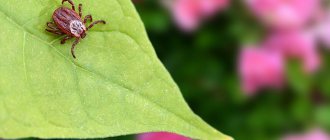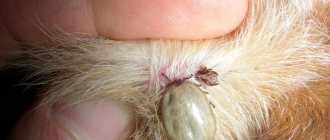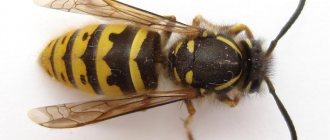Mosquitoes are a serious problem during the warmer months. The bites cause painful itching, and the insects themselves can carry diseases dangerous to human health and life. Interestingly, these harmful creatures do not only bother the average person on the European continent. You can meet them all over the planet. They are not found except in Antarctica. But in the Arctic they feel quite confident, although they are active only for a few weeks during the entire calendar year. At the same time, they reproduce in huge numbers. Caribou and reindeer bear the brunt of the attack, losing up to 500 ml of blood at a time due to the attacks of hordes of bloodsuckers.
People are not the only target of mosquito attacks.
Mosquitoes happily drink the blood of mammals and even birds. Nature has provided a mechanism that balances the spread of bloodsuckers. She created a special way of reproduction, as well as a limited lifespan of individuals. Get rid of mosquitoes in your country house
Get rid of mosquitoes in your country house
Hit from the USA. A guaranteed way to destroy all mosquitoes on the site.
skeetervac.ru
Open ›
How long do these harmful insects live and what does the timing depend on?
How mosquitoes reproduce
Young offspring appear in early spring - at the end of April, beginning of May. They gather in the area around the places where the larvae lived. Females and males lead a carefree life, feeding on the nectar of flowers. After a while they begin to gather in flocks. The insects mate for several days and fly away in different directions. After this, the diet of mosquitoes undergoes changes depending on gender. Males continue their life in the grass and foliage of young trees, females go in search of food.
To form eggs, female mosquitoes need protein and lipids; the insect receives all this from the blood of animals, humans, and, less often, birds. After being completely saturated, the mosquito flies to a quiet place, digests the food, and eggs are formed during this time. Then he looks for a reservoir with standing water or damp soil and makes masonry.
Insects reproduce very quickly. At one time, a female mosquito reproduces from 50 to 150 pieces. Scatters them one by one. Mosquito eggs float on the surface of the water; at temperatures above +15 degrees Celsius, larvae appear after 9 hours. If the temperature is below these indicators, development extends over time to 20 days.
On a note!
How many eggs a mosquito lays depends on its habitat, food, and life expectancy. In an apartment, the insect's life cycle is shorter than in nature. The female does not have the opportunity to lay a large number of eggs, because there is simply nowhere. Without blood, the insect is able to give birth to new offspring, but the clutch will be no more than 50 pieces, the mosquitoes will appear small, weak, and the female in most cases dies.
Drinking blood
Only females have a need for protein contained in the blood of humans and animals. To find a potential source, pests monitor the heat emitted by people's bodies or the aroma of carbon dioxide that is released when people exhale. In parks and in nature, the insect feeds on the lymph of an animal or livestock.
According to studies, scientists have determined whether mosquitoes will attack birds. Yes, they can consume the lymph of certain species of birds, and the food chain of bloodsuckers also includes rodents. Also, laboratory conditions made it possible to find out how much blood the pests drink at one time. For example, an insect weighing 3 milligrams drinks about four to five milligrams of blood.
To be able to provide constant nutrition to a female, certain conditions must be present. For example, egg laying should be carried out in an area where there is a high level of humidity and an acceptable temperature. Because of this, females choose places near ponds, swamps or containers where water has stagnated. If we talk about urban conditions, then the choice falls on basements.
Cycle of life
The lifespan of a mosquito directly depends on the habitat into which it finds itself after birth. Temperature plays the main role. At +25°C, insects live for about 45 days; at +20°C, the lifespan of a mosquito increases to 60 days. A decrease in temperature below +15°C slows down metabolic processes in the body of adults and larvae, prolonging their existence to 119 days.
On a note!
How long a common mosquito lives depends on its gender. The average life expectancy of a male is 14 days. Genetic ability – 20 days. When talking about timing, they most often mean how long the female lives.
Mosquito reproduction
In the wild, mosquitoes drink the blood of animals and reproduce healthy offspring in large quantities. In a humid, moderately warm environment, the mosquito can live for almost 2 months. An increase in indicators from +25 degrees Celsius does not allow insects to rise into the air, as they instantly lose moisture. Whereas, under favorable conditions, mosquitoes reach the 9th floor. A decrease from +10 degrees Celsius helps to slow down metabolic processes, the insect falls into suspended animation, but continues to live.
Nutrition of sugars in vegetation
Small and large mosquitoes can feed on nectar or food of plant origin, since they contain substances necessary for replenishment.
Among the preferred plants are:
- Burdocks;
- Blooming tansy;
- Yarrow latifolia.
What mosquitoes choose to eat depends on their habitat. For example, forest dwellers and inhabitants of summer cottages choose tansy - at the same time one flower can accumulate up to 10 individuals. Tansy contains fructose, which has a beneficial effect on the health of this type of pest.
Danger to humans
Mosquitoes drink blood to reproduce, to replenish energy reserves, and to continue living. Humans attract insects with the smell of lactic acid, carbon dioxide, sweat, and heat. At the site of the bite, irritation, swelling and redness, itching appears, and sometimes a severe allergic reaction develops.
There is no particular harm from an ordinary mosquito. However, other species pose a danger to humans. In tropical countries, insects cause myiasis. They lay eggs in humans, the larva begins to develop under the skin on the body or migrates to the eyes, internal organs, and brain. Deadly diseases are carried by malarial mosquitoes, icteric mosquitoes. Karamors or large mosquitoes are classified as agricultural pests. This species is not capable of biting humans; it feeds on nectar and plant juices. The larvae damage roots, berries, and fruits.
Features of the oral apparatus
The oral apparatus, which allows the mosquito to feed, is distinguished by its piercing-sucking type. It is characterized by a rather complex structure, is located in the lower part of the mouth, and has the shape of a proboscis tube. The sharp stylets of the jaw are also located here.
It is important to understand that a mosquito can be a carrier of dangerous infections - malaria, yellow fever, West Nile fever, tularemia.
A human bite occurs as follows: lowering the proboscis inside the skin to the depth where the capillaries are located. Having cut a hole, the insect can easily suck out the blood.
Classification
Insects are divided into two subspecies:
- C.p. pallens is a mosquito with a brown body color and white stripes on the limbs and proboscis. Distributed in Japan and North America.
- C.p. pipiens - the subspecies has two forms:
- Culexpipienspipiensformapipiens – dipterous insects of this form easily adapt to various conditions for the development of larvae. Their offspring grow in any body of water and do not require clean water. The number of larvae depends on the nature of the development site - in a puddle there are 100-800 of them per square meter. m, and in the gutter 5400-27500 pieces/sq. m.
- Culexpipienspipiensformamolestus - urban or basement squeak mosquito. The form has several behavioral and physiological differences. Adults do not require swarming to mate. One of the important features of molestus is autogeny, the ability to lay eggs once without feeding on blood. Young females manage to lay a clutch of 100 eggs immediately after emerging from the pupa. This ability allows you to quickly increase the number of insect colonies.
The city mosquito is characterized by aggressive behavior. Its bites are more painful and are more often accompanied by infections and allergic reactions. To exterminate adult parasites in basements, treatment is carried out using contact insecticides that have a prolonged residual effect. Spraying vegetation within a radius of 300 m around the building allows you to increase efficiency. Larvicides are used in areas where larvae hatch.
Body structure
The mosquito's body is divided into several parts. The head is attached to the thoracic region using three shield plates. It has sensitive antennae, huge ones, and mouthparts. In the middle part of the body is the chest, divided into three segments. The legs, abdomen and wings of the insect are attached to it. There is also a spiracle connected to the trachea.
How many limbs does a squeaking mosquito have? To answer this question, you need to carefully examine the adult. Six thin legs are attached to its thoracic region. They have a rather complex structure, allowing the insect not only to stay on the skin of the victim, but also to crawl on its bellies. Each foot has five segments with suction cups at the end, the last of which is equipped with two claws.
Character and lifestyle
Mosquitoes are not harmless insects. Their females are real parasites who need to feed on someone else's blood for their continued existence and production of offspring.
Often their bites become fatal for people, because mosquitoes carry a wide variety of diseases dangerous to people. Insects are distinguished by amazing endurance, but they do not live in too cold climatic conditions.
In places with a temperate climate, mosquitoes are active from late spring to October. With the early arrival of spring, their appearance can be observed in April.
In the summer, they can be everywhere - in a living room, on the street, in the forest, near a pond. In winter, mosquitoes find refuge in barns with livestock, in basements and other buildings.
Developing mosquito-like speed, insects can cover a distance of 1 km; females especially practice such flights when they are looking for something to profit from.
Mosquitoes are the root cause of many ruined outings and just restful nights in a living room. Therefore, people have long made sure that in such situations they always have the necessary mosquito repellents.
A variety of methods are used to combat these insects. People have never learned to completely destroy squeakers, but they still manage to protect themselves from them.
mosquito repellers have long proven their worth which you can turn on in your living room and not be afraid of being woken up or bitten by an insect at night. These devices have very different structures, but the benefits from them are incredible.
During camping and expedition conditions, people are saved by various ointments from mosquito and insect bites . There are ointments that help relieve symptoms of itching and allergic reactions caused by mosquito bites. They help avoid severe negative consequences in the form of swelling and inflammatory processes.
Short description
The mosquito belongs to the class of insects, order Diptera, family of blood-sucking mosquitoes.
This creature has lived on the planet for more than 145 million years. It is active in the warm season - at the end of spring, in summer. They are distinguished by a characteristic squeak, an unpleasant bite, which is accompanied by severe pain. In nature, there is a huge variety of mosquito species, which differ in body structure, size, lifestyle, bite pattern and other factors. But many of them prefer to feed on the blood of humans and animals.
To understand what a mosquito looks like, it is worth considering its main appearance features:
- the insect has functioning wings, with the help of which it is able to fly over long distances. The span reaches 3 cm. The top is covered with scales;
- three pairs of thin long legs, at the end there are claws with which they cling to the surface;
- his body is oblong;
- the parasite has a wide chest, an abdomen consisting of 10 segments, which is supported by long legs;
- on the surface of the head there are invisible antennae and a proboscis, with which it pierces the skin and then the wall of a blood vessel, biting and sucking blood.
The squeak mosquito has a gray or brown body color. But there are species of insects that have orange, yellow, green, and red colors. Some members of the family have lush brushes on their wings and legs.
Insects don't fly that fast. The flight speed of a mosquito is 3.2 km/hour. Sometimes wingless varieties are found.
How long do different species live?
The lifespan of all types of mosquitoes is approximately the same. Insects living in the Arctic live the shortest. There they appear for several weeks, when water bodies form in the permafrost under the influence of heat. In a short time, the parasites manage to pay in huge quantities.
As part of the midges, mosquitoes attack animals and people. Their main victims are herds of caribou. On a day, bloodsuckers manage to drink up to 300 ml of blood from each animal.
A new species of mosquito has appeared in megacities – the urban one. It lays eggs in the basements of houses. The larvae develop in a humid environment and from there fly into apartments. These mosquitoes remain active all year round. It is not uncommon for them to lay eggs in bathrooms, toilets and closets, and then flocks of hungry bloodsuckers emerge from there.
Mosquitoes do not live long, but during their short life they manage to cause a lot of trouble to people and animals. But the complete destruction of bloodsuckers cannot be allowed, as this will disrupt the ecological chain: fish and birds feed on mosquitoes and their larvae.
Lifespan of an insect after a bite
The mouthparts of a mosquito are fundamentally different from the female, which has sharp fangs for piercing the skin and sucking blood from a person or warm-blooded animal.
Some species are able to feed on the blood of even fish, birds and amphibians. An unfertilized female, like males, feeds exclusively on plant foods.
Insects can lay eggs without blood. But in this case, immediately after oviposition, the female dies in one day, and less than half of the weak offspring survive.
Thus, if a source of protein nutrition is in close proximity, the female will be able to regularly replenish the necessary reserves of expended energy and live her full life cycle after a human bite, that is, at least 4 months.
Reproduction and lifespan
During the mating season, females produce an incomparable squeak, which they produce due to the movements of their wings. This sound attracts males. Moreover, the sound of mosquitoes of different ages is different.
The mosquito catches these differences and chooses an adult female capable of childbearing. In the swarm formed by mosquitoes, the process of mating of females with males occurs. After this, eggs are laid.
Sometimes their number can reach up to 290 pieces. This process can be repeated every 3 days. After going through all the phases of its development, an adult mosquito is eventually born. The lifespan of males and females is slightly different. The first ones usually live no more than a month. Females are given a longer period - about 2 months.
How long can they live in an apartment?
Despite the peculiarity of dipterans to adapt to climatic conditions, the temperature regime largely determines their lifespan. Life of a female:
- +23°C and above – up to 43 days;
- +20-23°C – up to 58 days;
- +15-20°C – up to 114 days;
- +10-15°C – up to 120 days.
The life of a male under the same temperature conditions will be approximately 2 times shorter, and after mating it does not exceed 5 days; the female is not limited in mating games. The temperature in the apartments of most people is 20-25 degrees, based on this, we can conclude that a female can live in such conditions for 1.5-2 months, a male for 20-30 days. Moreover, having the opportunity to feed on blood, a female individual will regularly hatch larvae in damp places in the room, populating the house with a new generation.
To prevent blood-sucking insects from entering your home as little as possible, mosquito nets are placed on the windows. However, in practice, such means of protection do not give 100% results; squeaks still enter the house through the front door or otherwise. Many chemicals have been invented to combat insects, but they may not be suitable if there are allergy sufferers and small children in the house, so the safest methods are considered to be keeping plants at home: geranium, elderberry, marigold, basil, lemongrass, lilac, bird cherry. The use of aromatic oils is also effective: geranium, eucalyptus, cedar, anise, tea tree, basil.
General information
A mosquito is a miniature insect that has a pair of transparent wings, six long legs and a proboscis with which it feeds. The body consists of the cephalothorax, where the internal organs are concentrated. The elongated abdomen serves to concentrate the blood received by the insect from the body of the victim.
Mosquitoes are truly unique creatures. They live all over the globe. The only exceptions are the Antarctic latitudes, where the life of a mosquito becomes impossible due to too low ambient temperatures and lack of conditions for food and reproduction. In total, researchers have recorded about 3,000 individual species of mosquitoes.
